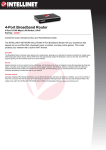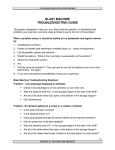Transcript
Processor Troubleshooting Facts Processor Troubleshooting Facts Failure symptoms of a CPU include: PC will not boot. PC boots, but the operating system fails to load. PC has POST parity problems with a number of devices. PC locks up shortly after startup: This symptom is possibly a cooling/heating problem. Check for this problem by shutting down, letting the system cool off, and restarting the computer to verify whether the problem repeats itself. Check the following if overheating seems to be the problem: Check the heatsink and fan for placement and condition. Verify that thermal paste of a thermal pad has been used between the processor and the heat sink. Verify that heatsink is firmly attached to the CPU. Verify that the CPU is properly seated in its socket. Verify that system case fans are working and that the case and expansion slots are in place. If the CPU is an older Pentium without a heat sink or fan, add one. If the computer is not overheating but has this symptom, the problem could be the clock jumpers on the motherboard or system timers (in BIOS) are set incorrectly for the processor. PC sounds a POST beep code indicating a CPU fault upon boot-up: Verify that the CPU is receiving sufficient power by checking the power outputs. If these are good, replace the CPU. If the fault remains, the problem is with the motherboard. PC crashes on startup or when running a software application or certain group of applications: Run repetitive test using diagnostic software. After replacing a seemingly faulty CPU and the symptom remains, run similar tests on the motherboard and chipset. Do not forget to check for a corrupt file in the software. Note: If the computer boots but the processor is running at less than its rated speed, check for incorrectly set motherboard settings or edit the CMOS to the appropriate CPU speed.




